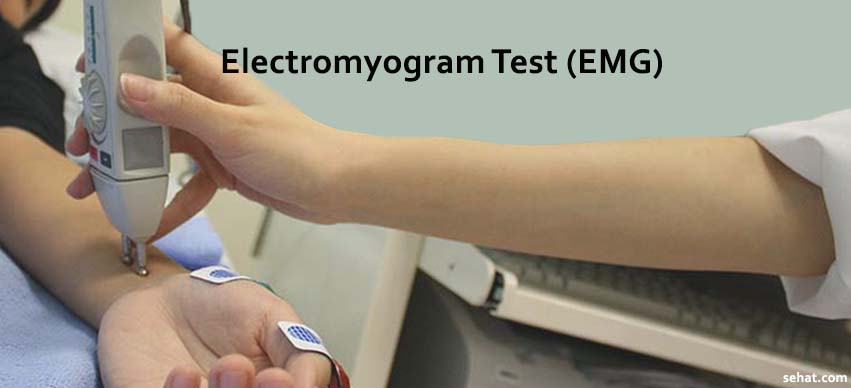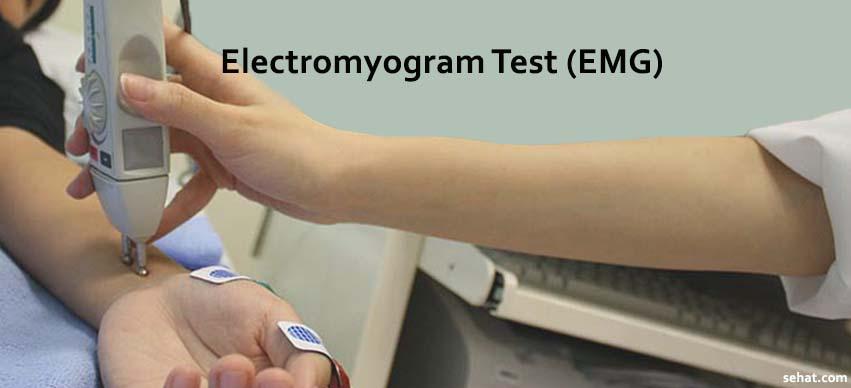Nanoparticle Therapy – An Emerging Cancer Treatment
5 Min Read


Electromyography is a diagnostic examination to determine the health of muscles and the nerve cells controlling them called as motor neurons. Motor neurons transmit electrical signals that cause muscle stimulation and contraction. The Electromyography or EMG test translates these signals into graphs, sounds or numerical data that a specialist surgeon interprets to analyse the diagnosis. Electromyography is conducted as a test for muscle disorder.
The doctor will recommend EMG test only when he finds symptoms of muscle or nerve disorder. These symptoms may be tingling, numbness, muscle weakness or pain, cramping or unexplained weakness in the limbs of the patients.
The EMG test is done to find problems that damage muscle tissue, nerves, or spots where muscle and nerves intersect.
Before the procedure, patients are usually asked to bath to remove the oil and dirt from the body. You need to bring to the notice of the surgeon before the EMG test if you have pacemaker planted in your body. Also about other medications, especially blood thinners and anticoagulants. Between three hours prior to the electromyography and the test, you are not supposed to smoke, consume coffee, tea and cold drinks. It will disturb the EMG testing process and not show the accurate results.
During EMG test, an electric needle instrument called electrode is inserted into the muscle through the skin. There are usually two parts to an EMG procedure: the nerve conduction study and the needle EMG. A nerve conduction study is the first part of the process that evaluates the nerves that control muscle movement, while a Teflon coated EMG needle assesses nerve activity within the muscles through sensors. A nerve conduction test is essential for diagnosing several muscular and neuromuscular disorders.
The electrical activities recorded by the electrodes is then displayed in form of a wave graph on a screen monitor called oscilloscope. An audio-amplifier is used in EMG test to note the sounds observed during the test. EMG test measures the electrical activities of the muscles at rest, slight contraction and forceful contraction.
There might be some discomfort and minute pain during the process of EMG testing. The muscle may feel tender or bruised for few days where the electrode needle was inserted.
A very minute electrical activity is observed in a muscle while at rest during the EMG test. Flexing or movement of the muscle should show electrical activities. Contraction of muscle should increase the electrical activity and form a pattern. If the pattern observed is normal, then your EMG test result is completely normal and you don’t need to worry anything about it.
If the results are not normal during an Electromyography test, then it may be a cause of several reasons like alcoholic neuropathy, polymyositis, sciatic nerve dysfunction or Guillain-Barre Syndrome among others.
The Electromyogram (EMG) test procedure usually takes 30 to 90 minutes of duration to be conducted.
EMG test is a low-risk procedure and complications are rare. There is a very minute risk of bleeding, infection and nerve injury at the point of needle electrode injection.
Experienced neurologists at Sehat.com will provide you the exact insights about the abnormal results and guide you to perfectly sort these issues.
The Guillain-Barre Syndrome is a rare medical condition where the immune system attacks the healthy nerves cells in the peripheral nervous system causing severe muscle weakness and even paralysis. The exact cause of Guillain-Barre is still unknown, but the triggering point is infectious illness such as stomach flu or a lung infection.
The four main types of Guillain-Barre Syndrome are Acute inflammatory demyelinating polyradiculoneuropathy (AIDP), Miller Fisher syndrome (MFS), Acute motor axonal neuropathy (AMAN) and acute motor-sensory axonal neuropathy (AMSAN).
The major symptoms of Guillain-Barre Syndrome are tingling on toe or feet and moving up on the body, tingling or weakness that spreads rapidly, breathing problem when lying flat, choking of saliva or rapid heart rate. If you or anyone from your family faces any such symptoms, then do visit a neurologist who will diagnose and treat you with advanced equipment and examinations.
Electromyogram (EMG) test has evolved and developed globally from analogue era to digitalization. The advancement in the equipment and procedure has led to the recording of accurate results and minimal risks to the patients.
Sehat provides list of best Neurologists in Hyderabad from which you can research and choose the right doctor for your condition